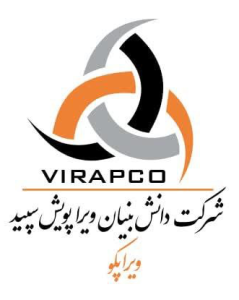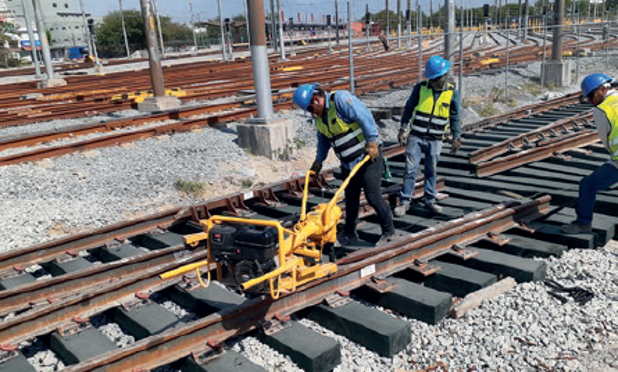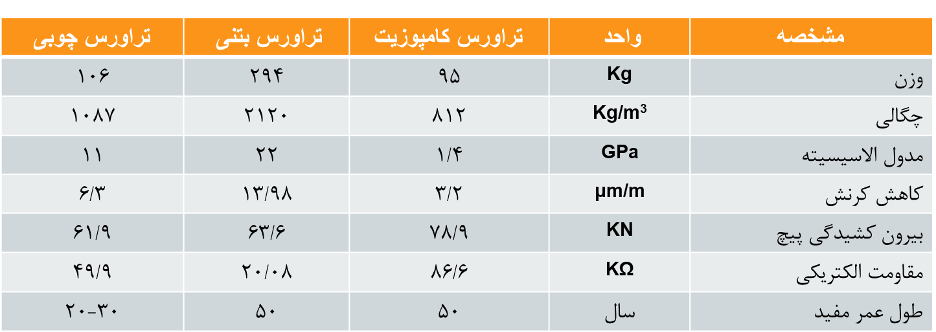Composite traverse
Application of composite truss:
- bridges
- Needles and intersections
- Main lines
- near a special building sensitive to vibration
- The stations
- the tunnels
Advantages of composite traverse
1) Absence of toxic substances (no need for creosotes, preventing contamination of soil and underground water with chemicals)
3) Reducing the carbon footprint (preventing deforestation, they require less energy than old traverses during production).
4) Easy to carry and install due to low weight (65% less than concrete traverse)
5) High ability to reduce shock loads and vibrations (77% more ability against concrete traverse)
6) electrical insulation and prevention of current leakage (75% more than wooden traverse)
7) Application in the transfer areas of bridges, needles and intersections due to low hardness (92% less than wooden and concrete traverses)
8) No need for maintenance
9) Flexibility at the time of drilling and binding
10) Good resistance to heat, corrosion, moisture
According to the aforementioned table, the composite traverse has a higher and significant advantage over other traverses.
Danesh Banyan Vira Poish Sepid Company is the first producer of composite traverse in the country and is also the first creator of reviving and recovering wooden traverses with composite traverse materials.


